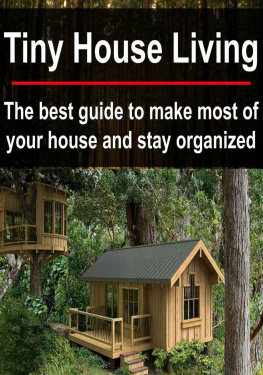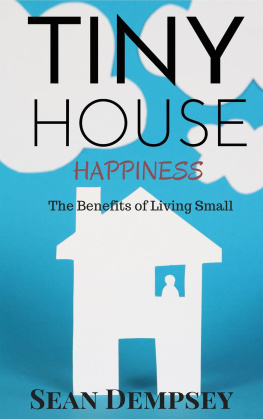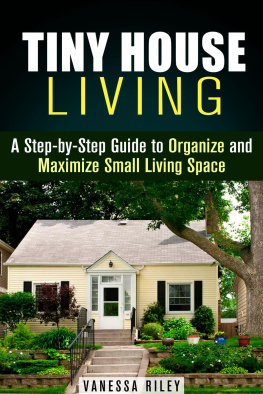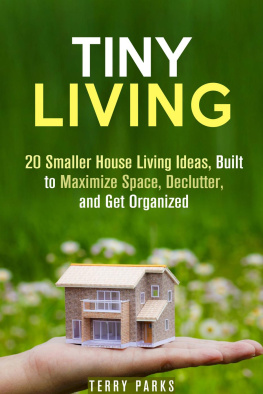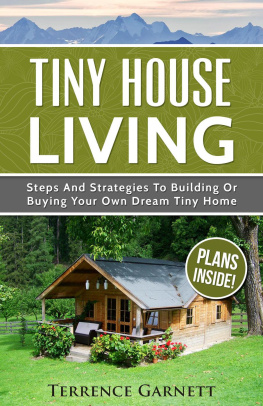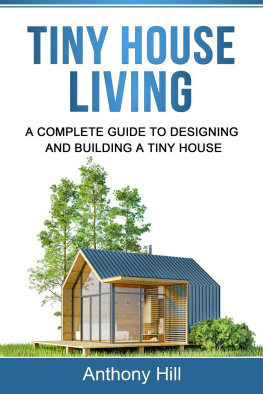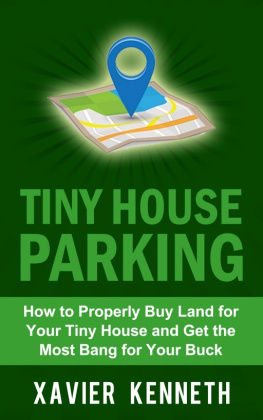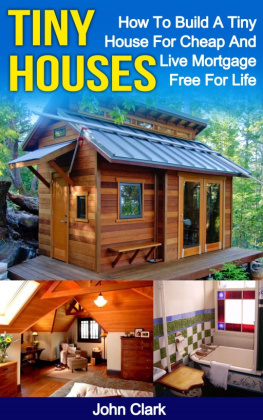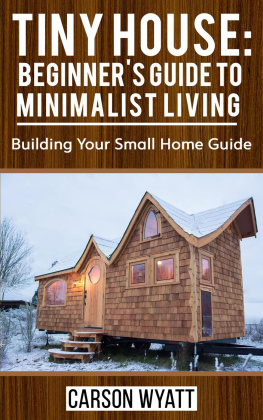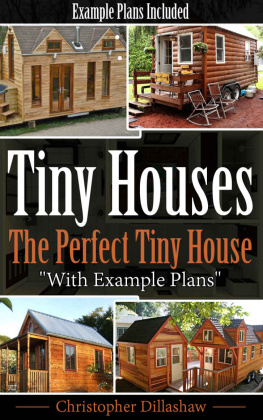Tiny House Living: The Best Guide to Make Most of Your House and Stay Organized
Thanks for your purchase of the Tiny House Living
You might wonder how this book is different than the others Ive published.
What youre about to read is a compilation of two separate books on tiny and small house living. I hope you enjoy it.
Book 1
Tiny House Living: Awesome Tips and Ideas on How to Stay Organized, De-Clutter, and Enjoy your Living space
Brian Knight
Introduction
With the recent changes in economy, housing and new trends emerging in real estate and buying and selling of properties, there has been quite a bit of talking about small housing the advantages of this kind of housing. Questions around the environmental concerns, building costs, rising prices, debt management, have forced people to think about how small they can afford to go. Future is being defined in the context of housing and the related aspects.
The points to consider are numerous but starting with the big ones, dont we have a responsibility towards our planet? The national expenditure of building average houses is quite big and it is important to think about it. The resources being used are not getting replenished easily and itll take hundreds of years to replenish what we have already used.
We have certain responsibility towards our relationships too. Large houses absorb the family members in the nooks and corners of the house and there is considerable communication gap. Small houses do not allow you to continue a fight or a misunderstanding for a long time because you cannot be in the same room and not talk for hours or days. There may be time when there is lack of space and you need personal space in relationships too but the warmth enjoyed is far more than the pain of absence of space.
What about the financial burden that big houses come along with? The most common source of stress for any common person is the house loan or mortgage. It is emotionally, financially, and mentally a draining experience and small houses save you from a lot of trouble of this kind. It causes serious disorders like insomnia, hypertension, and anger problems. The most frequent dying wish for people is that they had a more relaxed and joyful life, and if debt is not the sole agent to cause this problem, it is definitely one of the most important.

Now there are some practical difficulties associated with small houses and so do the big houses. The problem is to have enough space for your comfort, to have privacy, to have a relaxed environment, to raise children comfortably, to have a good kitchen, a cozy bedroom, and a living room for all the time you spend with your family. It is challenging to ensure a very comfortable living in a small house and you have to be in the creative genius mode in order to do justice with the space and comfort needs.
We have gone ahead and discussed some easy, DIY, and creative ideas for all the major spaces of your house so that you have a great piece of help at hand while you are designing your dream tiny home. This will come as a guide to some common problems, some common mistakes, and the easiest solutions to all of them.
A living room is supposed to bring the family together, a bedroom is expected to work as your den where you relax, rejuvenate, and refresh yourself, and a kitchen is meant to create fond memories and wonderful tastes, and above all, a storage section and planning that can contain all your things big and small without cluttering the space and making it look crowded or overloaded.
Approach the house joyfully and you are all set to have a great life in a small space and make it home sweet home.
Tiny house living: Initial planning

Designing and planning the layout of a small house is something very different from a large sized house. A conventional and large house has different layouts and plans that are not going to be functional for a small one. The need of planning efficiently and smartly is far more deep and desperate in a small house rather than a large one or even a standard one. If you move in or design a large home, it is quite likely that you would to do it after moving in, but you do not have the same option open here because you cannot move in with all your stuff and then plan. You have to acknowledge and register each and every small detail here and make a list and go ahead. There are certain things to keep in mind while you are making those strategies.
- How you want your house to be. This factor is extremely important while making plans for a small house. You have to know what kind of person you are and the kind of house you want. If you are the partying types and the living room space is very important to you, then the designing going to be far more different from a person who wants a comfortable and comparatively bigger bedroom. If you work from home and like to have an office, then have a space that can work as an office and make your living room and bedroom smaller to accommodate it. The house has to define your personality, your needs, and your comfort equally along with other requirements. If you like to dine out in order to avoid cooking and post-party cleaning, then a small dining area can provide you with a larger bedroom or living space. Make sure that youve got this sorted and decided.
- Honesty while assessing. You have to be honest while assessing your needs. Whether you want a big bedroom or a big dining room, assess your needs honestly, even if they are a little misplaced or weird. Be open to ideas and spend some time thinking about all this.
- Your belongings to be sorted. We are not talking about family members and pets. There are some other very essential things like bathroom stuff, kitchen essentials, cars and bikes, clothes, some furniture, etc. In small houses there is a huge crunch for space and storage areas and you need to be extra careful about what all your essential bare minimum needs are what you can do without. Lighten your burden as much as possible to live clutter free and move freely. Create an actual list of all the things big and small that you need and do not need. It helps greatly.
- Use design apps. Start right from the beginning to design your house. Unless you already have a design to suit all your needs, and you want to keep things as is, it is better that you use some help. If youve tried to use your conventional house design experience you are in for some trouble. Changing one element will make a huge difference on the other in a small house. So start with a blank sheet and design according to your needs and requirements. If you get locked with an idea then it would be difficult to accept the new ones. Once you know the space and the area just go ahead and design your house around it.
- Use designing software. Have you thought about using design software from the internet? It is a great tool to have three dimensional layouts and plans in standard measurements. It helps you in space management and helps improve, change, and adjust settings in order to arrive at a final layout that suits al your needs. Google SketchUp is one such program and you can view tutorials on web and learn all about it in a short time.
You have to know one thing for sure that every place has its advantages and problems. There is no comparison between conventional or large houses with the small ones and it is not necessary that big ones will make you happy. The key to happiness is not the size of the house but the people who live in it.
Next page
